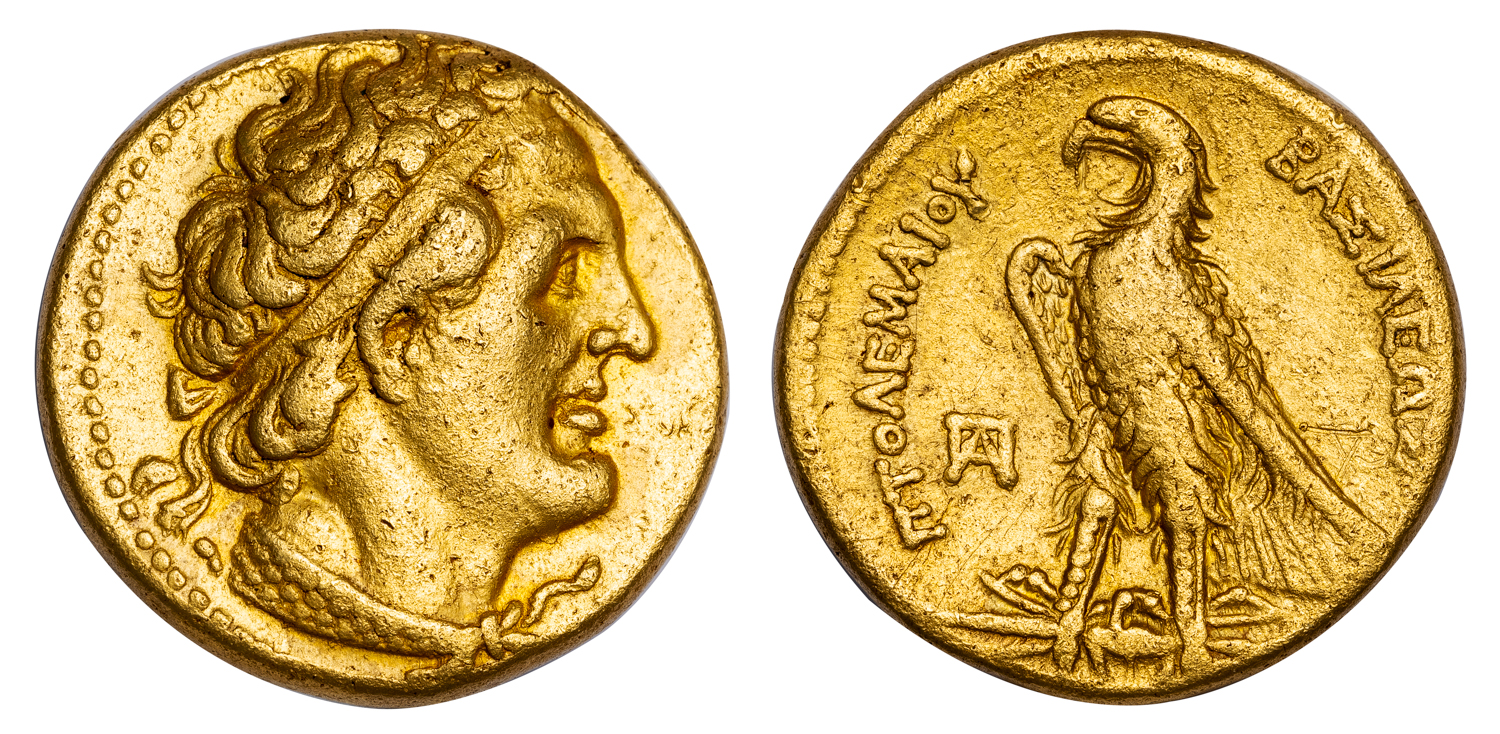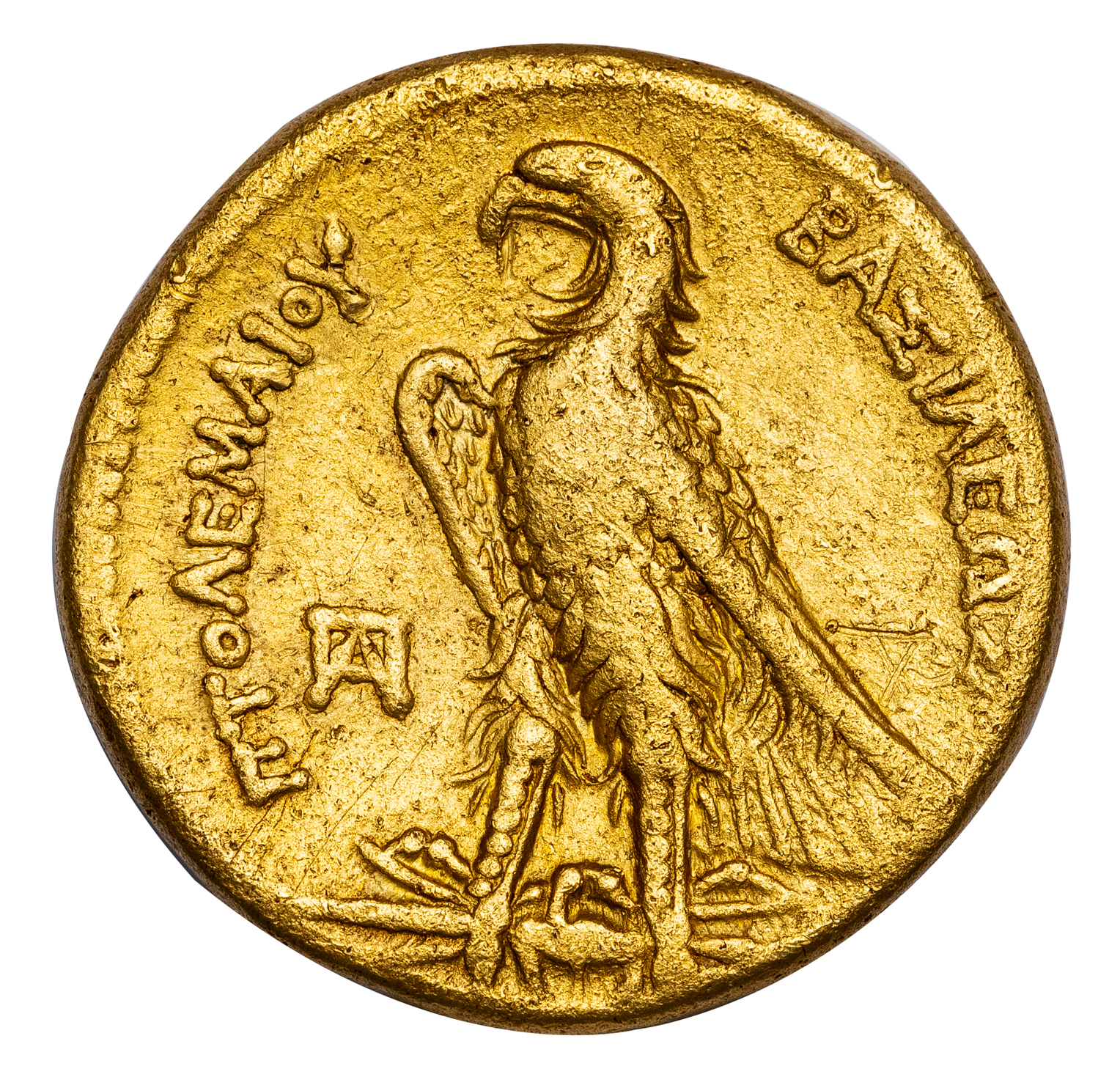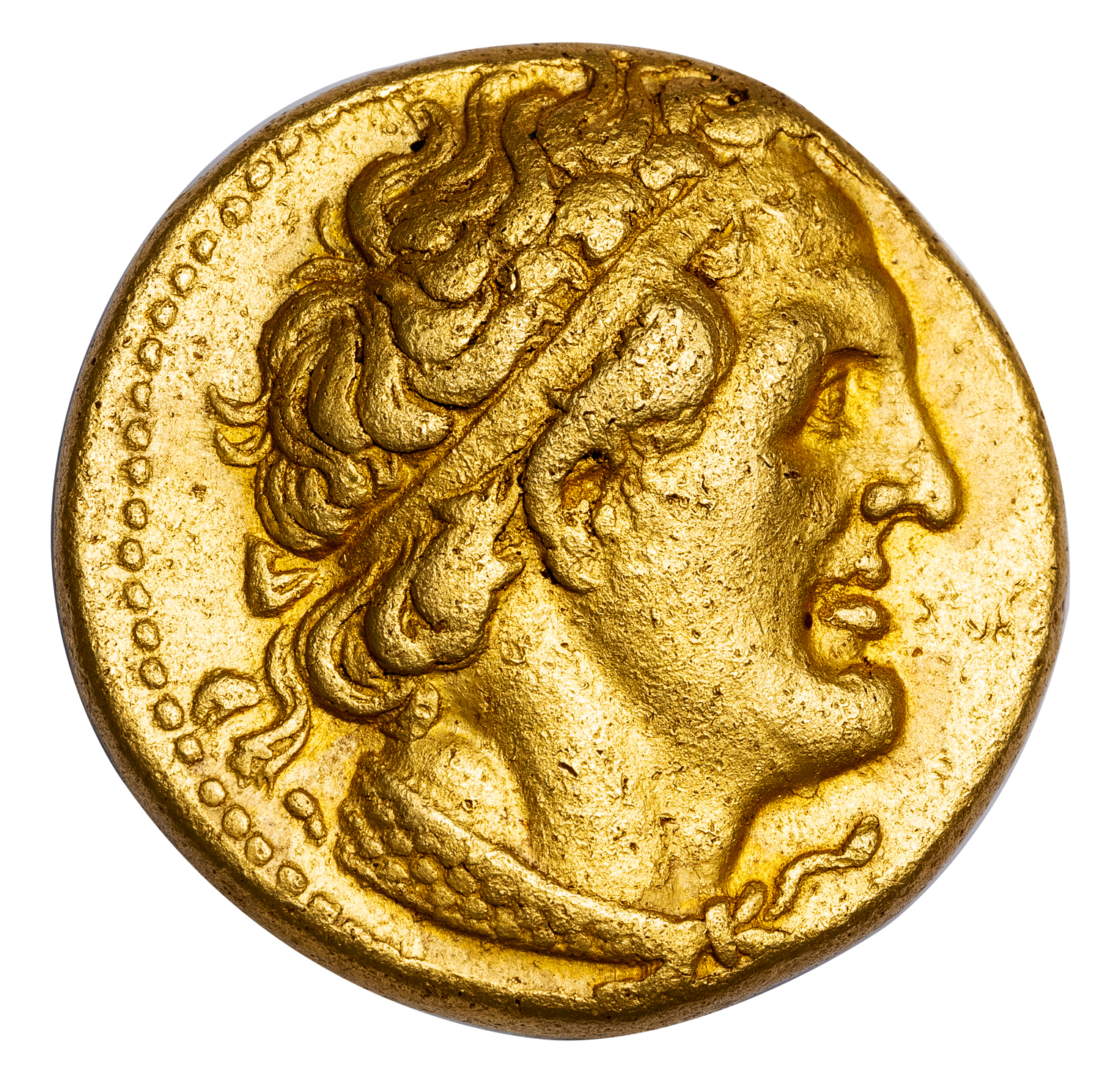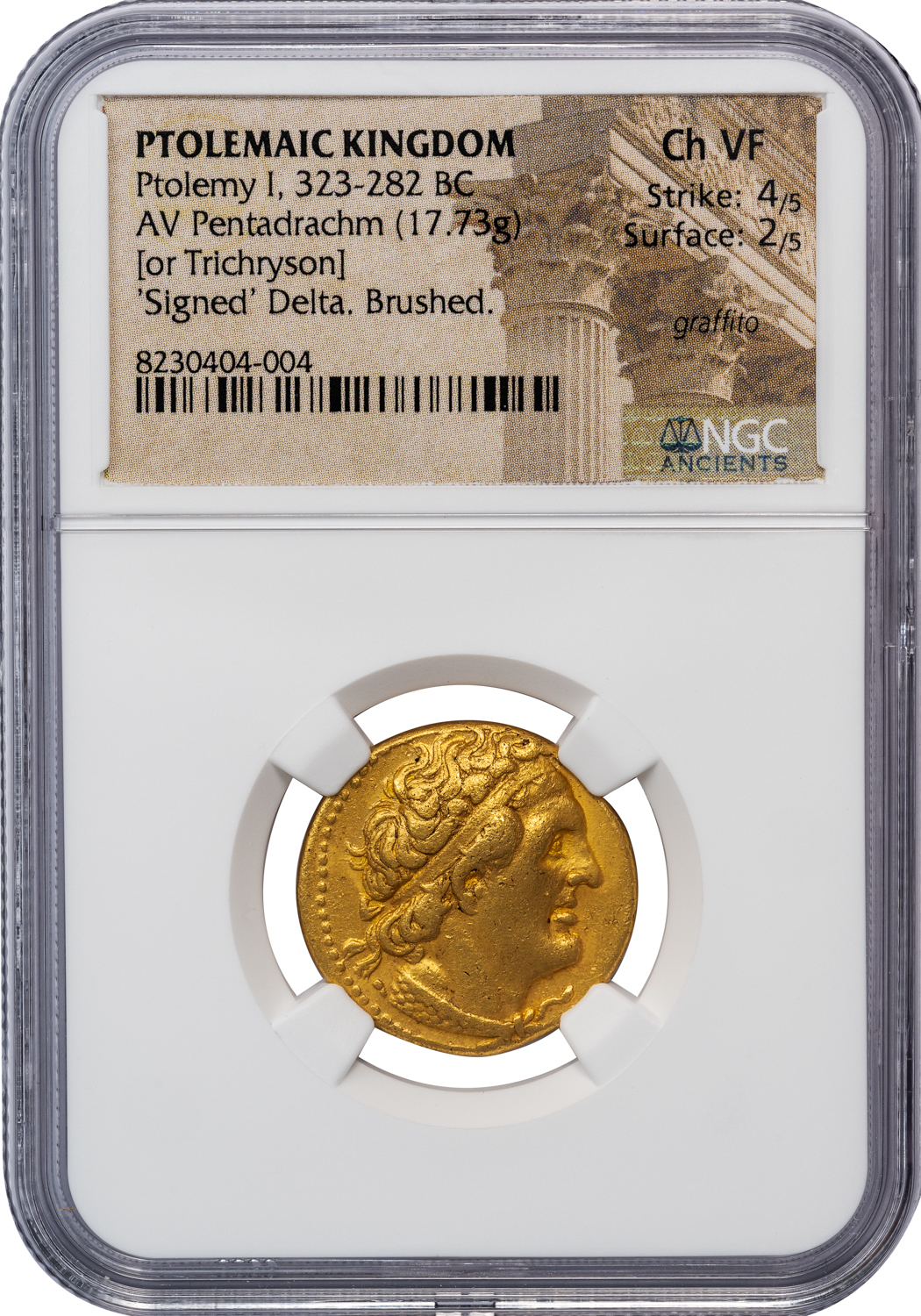PTOLEMY I GOLD PENTADRACHM – ISSUE OF ALEXANDRIA WITH ΠA CONTROL SIGNED BY DELTA – CHOICE VF NGC GRADED GREEK PTOLEMAIC KINGDOM COIN (Inv. 19917)
19917. EGYPT. PTOLEMAIC KINGDOM. PTOLEMY I, 323–282 BC.
Gold Pentadrachm (“Trichryson”), 17.73 g, 22 mm. Issue of Alexandria, ca. 294 BC or shortly thereafter.
Obv. Diademed bust of Ptolemy I right wearing aegis, small Δ behind ear. Rev. BAΣIΛEΩΣ ΠTOΛEMAIOY, eagle standing on thunderbolt to left, ΠA monogram in left field.
CPE 152; Svoronos 208.
NGC graded CHOICE VF, Strike 4/5, Surface 2/5, “graffito, brushed, ‘SIGNED’ DELTA,” rare gold pentadrachm emission with only 5 other specimens listed on CoinArchives.
This gold pentadrachm belongs to the new coinage produced by Ptolemy I to celebrate his assumption of the royal title in 305/4 BC. On the obverse he appears wearing the royal diadem, an unambiguous marker of Hellenistic kingship, while the eagle of Zeus is depicted on the reverse. The skillfully executed obverse portraits are notable for the tiny Greek letter delta (Δ) behind the ear—a feature also found on contemporary gold triobols and silver octadrachms and which probably has the same meaning as the tiny delta found in the aegis of Athena Promachus on Ptolemy’s earlier coinage of c. 312/11–306 BC. This letter has been interpreted by both Zervos and Hazzard as the signature of an exceptional die engraver. More recently, however, Catharine Lorber has argued that the long duration over which the cryptic delta appears on Ptolemaic coin dies suggests that it is unlikely to be the signature of an artist. Instead, she suggests that the letter may potentially represent a workshop, a private die contractor, or even the mark of administrative approval.





